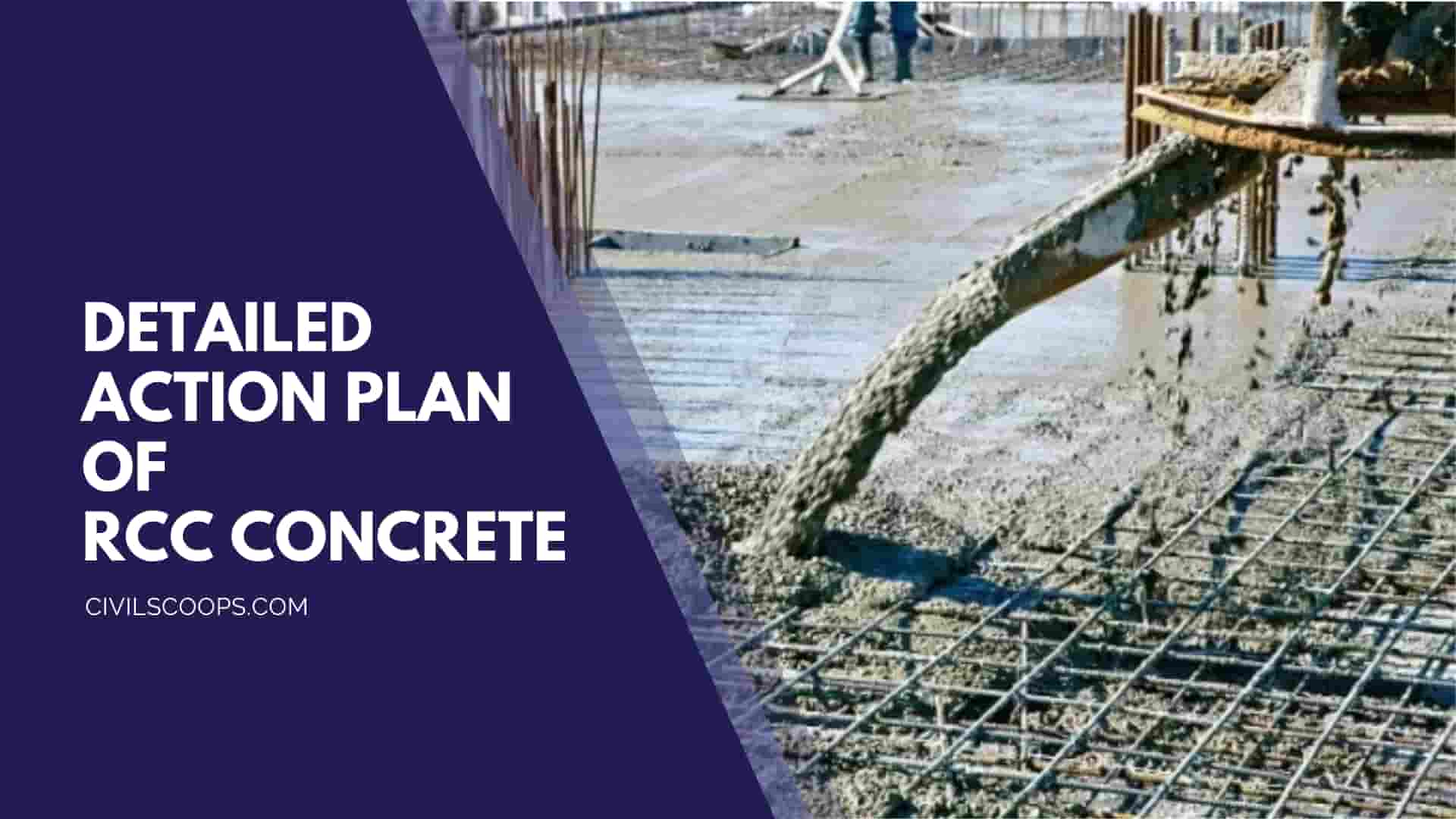Procedure for RCC Concrete
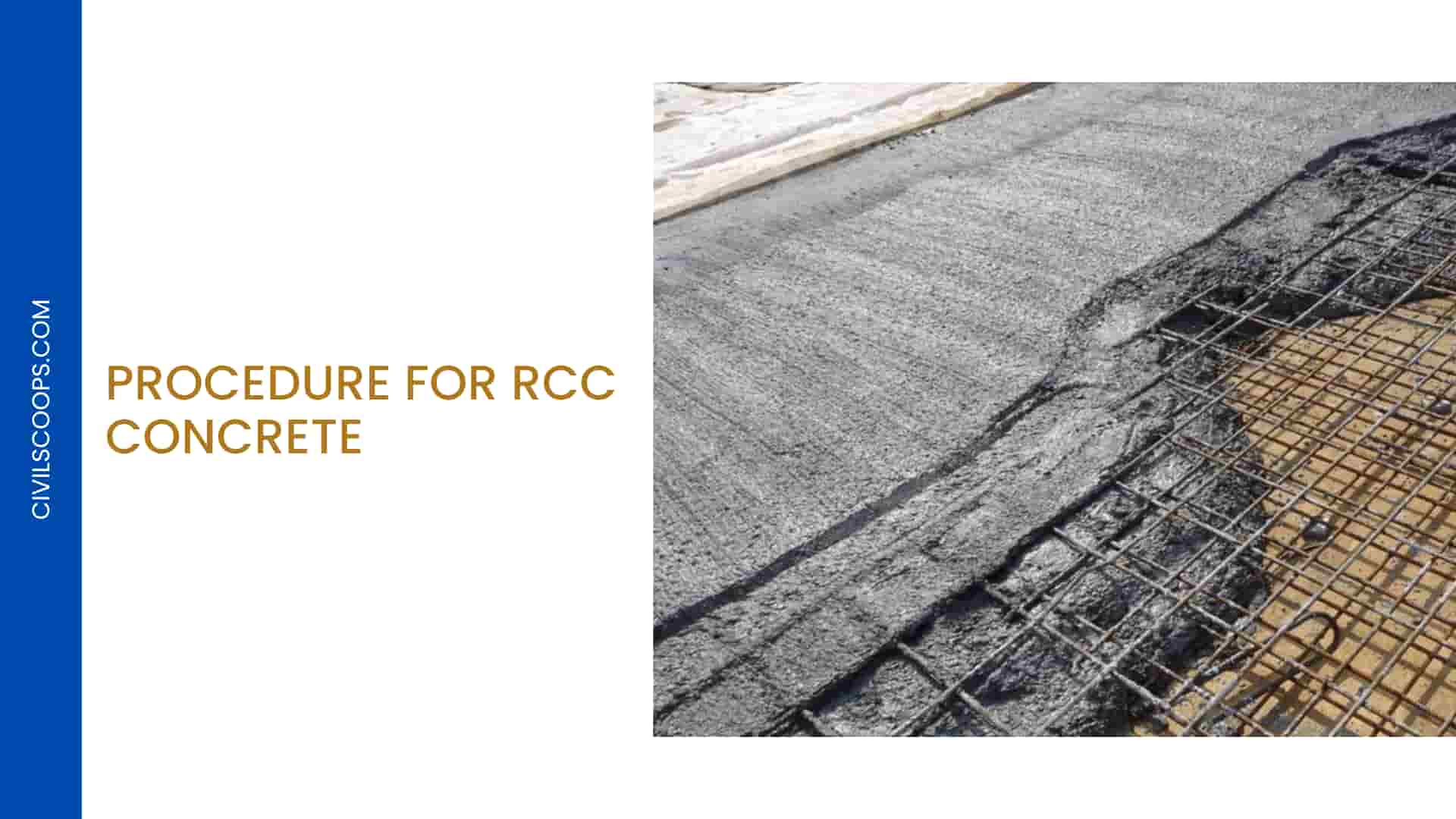
Table of Contents
Purpose of RCC Concrete
The purpose of this procedure is to provide a methodology for active surveillance of various activities involved in the supervision of R.C.C.work at the site and to ensure that (RCC CONCRETE )
Why Need RCC Concrete?
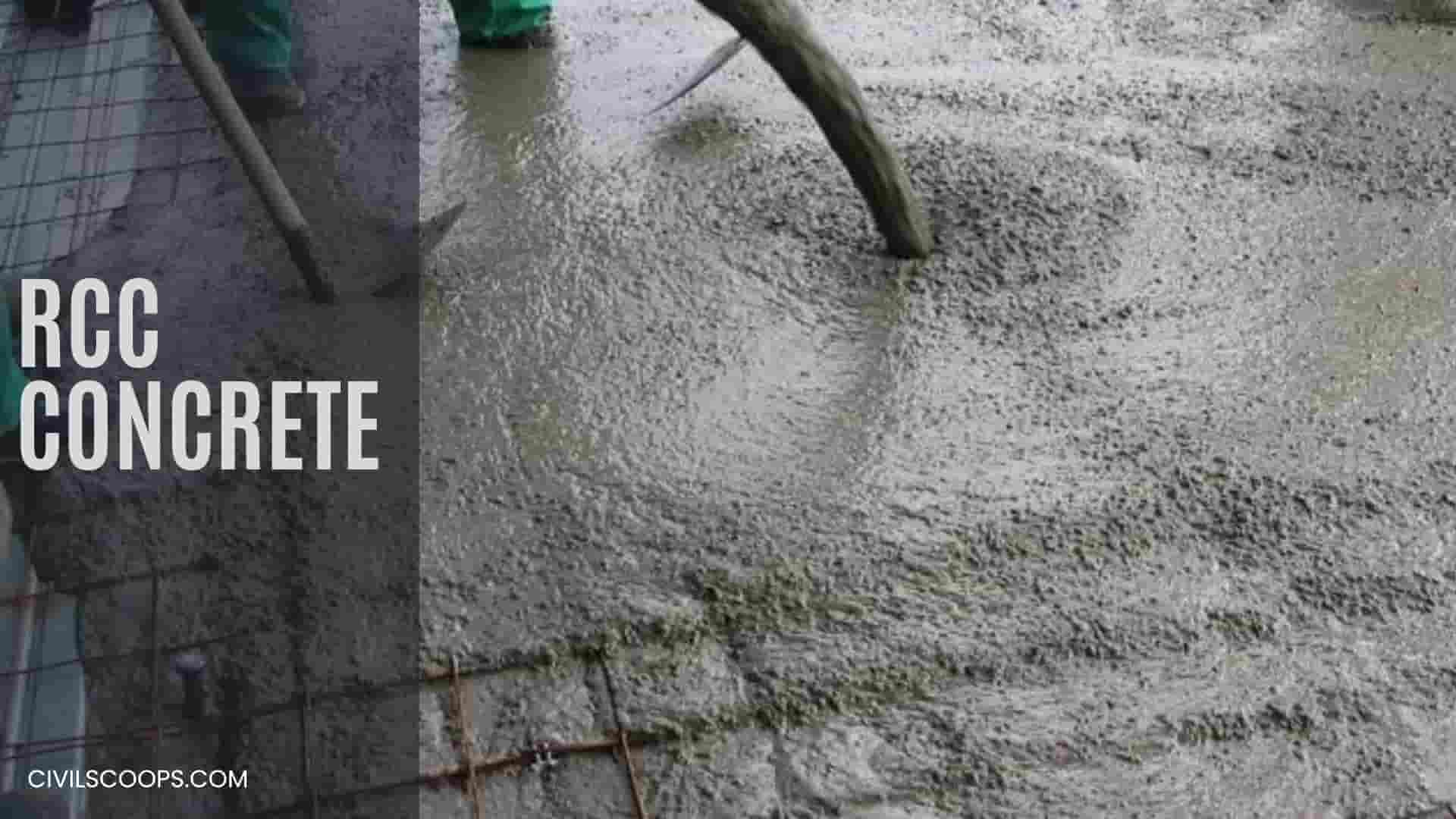
- Shuttering is placed as per the correct line & level.
- Reinforcement is laid on as per approved drawing\BBS\specifications.
- Proper procedures are followed for R.C.C. work.
- Documents are generated to quantify the actual job done.
Scope of RCC Concretge
This procedure covers supervision and record-keeping methods for RCC, which include.
- Top & a bottom level of RCC.
- Proportioning of a concrete mix as per grade of Concrete.
- Preparation of pour card and adhering to prescribed quality standards.
Reference Documents of RCC Concrete
- CPWD Specification
- AFC drawing
- SOR
Detailed Action Plan of RCC Concrete
A. Materials
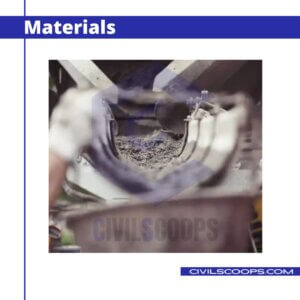
Testing of materials; for cement manufacturer test certificate shall be submitted for each batch of cement. In the case of MTC, correlation is not done; the same shall be tested at an approved laboratory. RCC shall be used as per SOR item & AFC drawings.
Coarse aggregate shall be tested at a field laboratory or an approved laboratory, gradation of coarse aggregate shall conform to IS:383. Crushing value, impact value, abrasion value, and flakiness index of coarse aggregate shall be tested at a field laboratory or approved laboratory per IS 2386. The frequency of testing shall be as per QAP. (Replace IS: 8112 with IS 1489 where PPC is used installed of OPC)
Fine aggregate shall be tested at a field or an approved laboratory. Gradation of fine aggregates shall conform to IS:383 & shall be tested in an area. The presence of harmful material shall be tested at a laboratory. The frequency of testing shall be as per QAP.
For reinforcement steel., the manufacturer test certificate shall be submitted.
B. Mix Design:
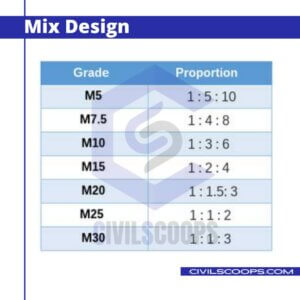
Before the establishment of the design mix, all the materials such as CA, FA cement, etc. shall be tested.
Design stipulations such as water-cement ratio, degree of quality control, minimum cement content, workability, etc. shall be considered as stated in the contract document.
In case of change of design stipulation or change of source of ingredients using for concrete re-design mix will be done.
The trial mix shall be taken at the site condition for the design mix.
C. Mixing of Concrete:

For weight—batching in a plant, the entire ingredient shall be poured by weight. Cement shall be stored in cement through a bucket – elevator. Water shall be measured in volume.
The admixture shall be measured by weight. During hot/cold weather, the mixing shall be as per IS:7861.
D. Transportation, Placing & Compaction:
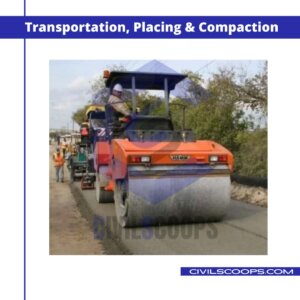
Concrete shall be transported from batching plants to the pouring location through transit mixers. Concrete shall be poured immediately after its transportation to the working site.
For concreting in-depth, chutes shall be used. The vertical fall should not be more than 1.5m in height.
Immediately after pouring Concrete into the formwork, it shall be compacted by using mechanical vibrating equipment.
Immersion type vibrator shall be inserted in a vertical position and care should be taken so that it does not over or under vibrate.
At the time of transportation and placing of concrete, all precautionary measure has to be taken to avoid any sort of deterioration in quality.
Care shall be taken to ensure adequate vibration, hounding, and mounding of Concrete between the succeeding batches. Before placing of Concrete, the area shall be cleaned properly.
Concrete shall be deposited as near as practicable in its final position to avoid re-handling.
Concrete shall not be started unless electrical conduits, pipes fixtures, etc. whenever required are laid before concreting all metal inserts anchor bolts pipe sleeves, etc. shall be fixed as per relevant drawing and that shall be checked W.R.T. its lines & levels.
E. Joints:
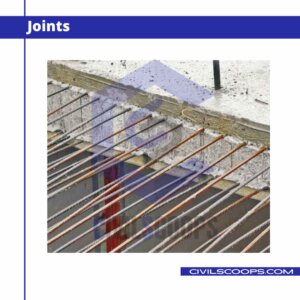
Construction joints shall be provided as shown in drawings or as decided by SGS. As far as possible, the number of construction joints has to be minimum.
The joint shall be formed 100-150mm below the lowest soft of the beam. The joint in beam & slab shall be vertical within 1/3rd-1/4th of the span with an approved stop board at the time of the resume of the next work.
The hardened surface shall be cleared off foreign materials, roughened property & wetted by pouring cement slurry or mortar.
F. Curing:

Concrete shall be cured by keeping it continuously moist wet for a specified period to ensure complete hydration of cement & its hardening.
Curing shall be started after 8 hrs of placement of Concrete in normal weather in hot weather after 4hrs.
The exposed surface of the Concrete shall be maintained continuously in a damp or wet condition for at least the first 7 days after placing the Concrete.
Curing shall be done 10 days for dry /hot weather conditions in case of mineral admixture is used curing may be extended to 14 days.
G. Strength Test of Concrete
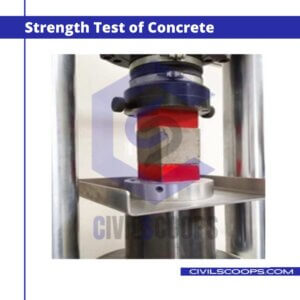
Samples in the form of 15 cm x I5cm x 15cm cubes shall be taken from fresh
Concrete, cured, and tested at 7 days & 28 days in accordance with IS 516.
The required strength of cubes depending on the grade of Concrete will be as per IS 456.
The Concrete shall be deemed to comply with the strength requirement if it satisfies the acceptance criteria as per IS:456.
H. Finishing of Concrete
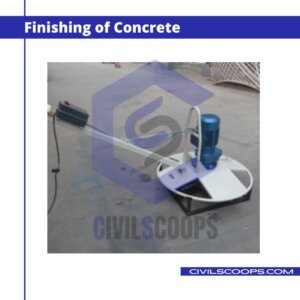
On removal of formwork, all the surface defects observed shall be rectified immediately.
The surface of now-shuttered faces shall be smoothened with a wooden float to give a finish similar to that of the rubbed-down shuttered faces the top faces of the Concrete intended to be covered with screed or any other work shall be left with a rough finish.
I. Formwork
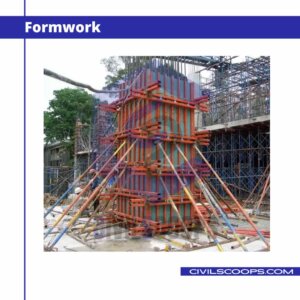
Forms for Concrete shall be of plywood conforming to IS: 6461 or steel & shall give a smooth & even surface after removal thereof.
Formwork & its support shall maintain their correct position & shall be of proper shape & profile so that the final concrete structure is within the limits of dimensional tolerance specified in IS: 456.
The form shall be true, rigid & adequately braced both horizontally & diagonally. The form shall have a smooth and even surface & be sufficiently rigid to carry without deformation.
The deadweight of green Concrete, working load, and wind load & also the side pressure of the green concrete form joint shall not permit any leakage. The form shall be strong enough to withstand the effect of vibrations.
Before re-use, all forms shall be thoroughly scrapped, cleaned, examined & whenever necessary shall be repaired & retreated before re-setting.
In the determination of time for removal of form, consideration shall be given to the location & character of structure the weather & other condition including the setting & curing of Concrete & material used in the mix.
The form shall be removed without shock & the method of form removal likely to cause overstressing or damage to Concrete shall not be adopted.
In normal circumstances form shall he removed below soffits of beams & slabs as per IS: 456.
Staging & scaffolding shall be properly designed & steel tubes will be used.
For circular shuttering, care shall be taken so that it is supported properly & diameter has been kept accurately.
J. Reinforcement Steel

Before placing the reinforcement steel, the bar bending schedule shall be prepared & got checked by SGS. Reinforcement shall be cut, bend to shape & dimension as shown in BBS/drawings.
All reinforcement shall be fixed in the correct position, as shown in the drawing & shall be properly supported to ensure that displacement will not occur when the Concrete is displaced & completed.
Reinforcement bars shall be tied at every intersection. Cover blocks of specified thickness, constructed & cured properly shall be placed in between forms & reinforcement to provide sufficient clearance.
In the case of overlapping of two bars, lap length shall be provided as mentioned in the drawing. The lap shall he stagger.
In any section, lap should not be more than 50% of the total area. Tolerance of placing of reinforcement shall be as per IS: 456.
[su_box title=”FAQ” style=”default” box_color=”#333333″ title_color=”#FFFFFF” radius=”3″ class=”” id=””]
RCC Full Form
The full form of RCC is Reinforced Cement Concrete. Cement concrete is strong in compressive strength but weak in tensile strength. To increase the tensile strength, mild steel bars are used in cement concrete thereby reinforcing it.
RCC Concrete
Reinforced concrete (RC), also called reinforced cement concrete (RCC), is a composite material in which concrete‘s relatively low tensile strength and ductility are compensated for by the inclusion of reinforcement having higher tensile strength or ductility.
RCC Building
Its full name is reinforced cement concrete or RCC. RCC is concrete that contains steel bars, called reinforcement bars, or rebars. This combination works very well, as concrete is very strong in compression, easy to produce a the site, and inexpensive, and steel is very very strong in tension.
Concrete Casting Procedure
Here. the list of concert casting procedure are as follows.
- Site Work
- Forming
- Mixing
- Placement
- Early Finishing
- Troweling
- Final Finishing
- Curing
[/su_box]
[su_note note_color=”#F2F2F2 ” text_color=”#333333″ radius=”3″ class=”” id=””]
Like this post? Share it with your friends!
Suggested Read –
- Difference Between Carpet Area and Built-up Area
- 21 Different Types of Arches Construction
- Difference Between Veneer and Laminate | What Is Veneer | What Is Laminate
- What Is Fresh Concrete | 8 Properties of Fresh Concrete
- What Is Slump Cone Test | Principle of Slump Test | Types of Concrete Slump
[/su_note]
Originally posted 2022-07-08 09:00:11.

